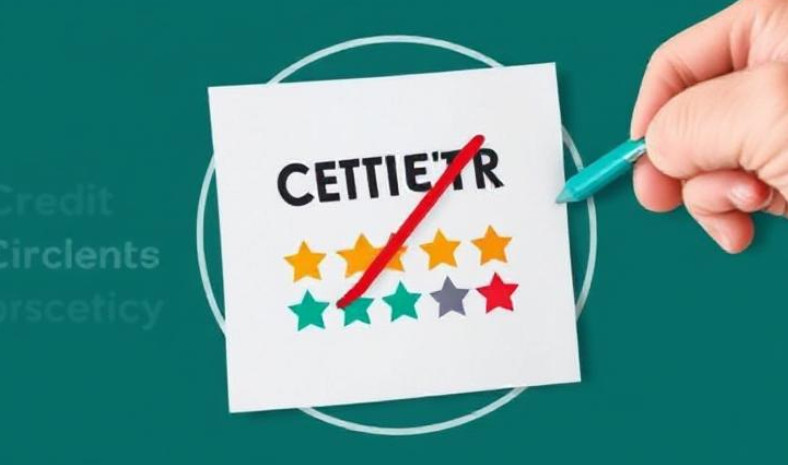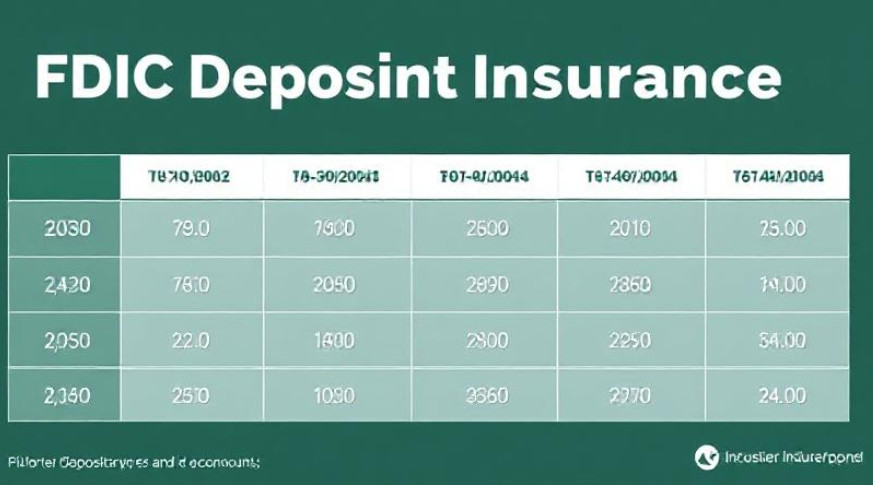With the substantial initial expenses linked to acquiring a residence, many young individuals embark on their independent journeys by leasing an apartment. As they advance in their careers, accumulate savings, and establish families, a significant number opt to invest in homeownership. Conversely, individuals approaching retirement may decide to sell their family homes, downsize, and transition back to renting.
The U.S. homeownership rate has exhibited fluctuations between 62% and 70% since the mid-20th century. At present, according to the U.S. Census Bureau, it stands at approximately 66%, showing an increase from multi-decade lows in the late 2010s. Notably, the homeowner vacancy rate is around 0.7%, while the rental vacancy rate is approximately 7%. Although the latter is typically higher than the former, this discrepancy is not uncommon.
Recent Trends in U.S. Homeownership & Contemporary Perspectives
Despite recent improvements, the homeownership rate has remained subdued for several years, stemming from the housing downturn and financial crisis of the late 2000s. The reasons for this decline include factors such as aging Baby Boomers transitioning to cozier rental dwellings, historically elevated housing prices diminishing affordability, high mortgage interest rates exacerbating financial challenges, and substantial student debt hindering younger buyers from saving for down payments.
The decision of whether and when to venture into homeownership is a deeply personal one that demands thoughtful consideration. This choice is subject to regional variations – what proves sensible in Peoria may not be applicable in San Francisco, and vice versa. Emotional and social influences, coupled with the cultural emphasis on homeownership, often play a role as significant as financial considerations.
Whether you’re a renter contemplating homeownership or a homeowner deliberating a shift back to renting, periodically assessing the comparative advantages, drawbacks, and costs of each option is essential.
Financial Aspects of Buying & Owning a Home
To begin, examining the expenses associated with purchasing and maintaining a home is crucial. These costs can be categorized into three main groups: upfront costs, ongoing costs, and potential one-time expenses throughout homeownership.
Upfront Costs of Homeownership (Including Closing Costs)
Acquiring a home involves various initial expenses, some paid directly after the seller accepts the purchase offer, while others are settled at the closing.
1. Earnest Money: This signifies the buyer’s commitment and is typically 1% to 3% of the home’s purchase price, deposited into an escrow account.
2. Down Payment: The upfront percentage of the home’s purchase price, usually ranging from 3% to 25%, is determined by factors such as credit, location, and loan type.
3. Home Appraisal: To ensure the property’s value aligns with the offer, an appraisal, costing $300 to $600, is mandated by lenders.
4. Home Inspection: Though not always obligatory, buyers are advised to have a home inspection, with costs similar to an appraisal.
5. Prorated Property Taxes: Compensating the seller for property taxes paid between the closing date and the tax period’s end varies based on local rates.
6. First Year’s Homeowners Insurance: Lenders require proof of insurance, usually requiring payment for the first year’s premium at closing.
Ongoing Costs of Homeownership
1. Mortgage Payments: Comprising principal, interest, property taxes, and homeowners insurance, these constitute the primary monthly homeownership expense.
2. Homeowners Association (HOA) Dues: Common in certain communities, these fees cover shared amenities and maintenance.
3. Utilities: Homeowners bear the responsibility of all utility bills, including electricity, gas, water, sewer, and garbage collection.
4. Routine Maintenance and Repairs: Regular upkeep, like lawn care and HVAC servicing, is essential, with an additional budget for unexpected repairs, typically around 1% of the home’s value annually.
Potential One-Time Expenses During Homeownership
1. Renovations and Upgrades: Major home improvements, such as kitchen remodels, entail significant costs.
2. Special Assessments: Applicable in planned communities, these one-time charges cover unexpected expenses or improvements.
3. Furniture and Decor: Moving or renovating may necessitate new furnishings.
4. Landscaping: Extensive outdoor spaces may require substantial landscaping costs.
5. Pool Maintenance: Homes with pools require ongoing expenses for cleaning and repairs.
6. Pest Control: Professional services may be needed for pest infestations.
Costs of Renting a Home
Renting typically involves lower upfront costs but incurs recurring expenses and potential one-time charges.
Upfront Costs of Renting
1. Security Deposit: Usually equivalent to one or two months’ rent, this safeguards landlords against property damage or lease violations.
2. First Month’s Rent: Paid before moving in, covering the initial month of occupancy.
3. Application Fee: Charged by some landlords for background and credit checks.
Upfront Costs of Homeownership (Including Closing Costs)
Buying a home involves several upfront costs, which can be categorized into various components, including earnest money, down payment, home appraisal, home inspection, prorated property taxes, and the first year’s homeowners insurance.
1. Earnest Money:
• Earnest money, typically ranging from 1% to 3% of the home’s purchase price, serves as a down payment to demonstrate the buyer’s seriousness.
• After the seller accepts the offer, earnest money is deposited into an escrow account, usually credited against closing costs if the transaction proceeds.
2. Down Payment:
• The down payment is the percentage of the home’s purchase price paid upfront, usually at closing.
• The amount varies based on factors such as credit profile, local market conditions, and the mortgage type. While typical ranges are 3% to 25%, certain federally backed mortgages don’t require any down payment.
3. Home Appraisal:
• Lenders mandate a home appraisal, costing $300 to $600, to ensure the property’s value aligns with the offer.
• Appraisal costs are paid during or before the appraisal process.
4. Home Inspection:
• Licensed home inspectors, though not always obligatory, are crucial to uncover potential issues.
• Buyers are encouraged to have an inspection, with costs similar to the appraisal, usually paid on the inspection day.
5. Prorated Property Taxes:
• Property taxes, paid upfront by owners, may lead to compensation for taxes paid between closing and the current tax period’s end.
• Known as proration, this expense varies based on local tax rates and the closing date.
6. First Year’s Homeowners Insurance:
• Lenders demand proof of homeowners insurance before closing.
• The first year’s premium is typically paid upfront, with costs varying based on home value, location, and coverage details.
7. Other Closing Costs:
• Appraisal, inspection, taxes, and insurance are components of closing costs.
• Additional closing costs include loan origination charges, credit report fees, flood certification fees, title insurance, recording taxes, transfer taxes, first month’s mortgage interest, closing fees, and broker fees.
• Total closing costs generally range from 2% to 5% of the purchase price, with the ratio decreasing as the purchase price increases.
• Sellers may agree to cover some or all closing costs based on market conditions, economic climate, and negotiations.
Before making an offer, consulting with your agent about the feasibility of sellers sharing or covering closing costs in your specific market is advisable.
Recurring Costs of Homeownership
Owning a home comes with various recurring costs, some incorporated into monthly escrow payments and others paid separately.
1. Loan Payments:
• Monthly principal and interest payments are made for the duration of your mortgage (usually 15 or 30 years).
• Fixed-rate mortgages maintain constant payments, while adjustable-rate mortgages fluctuate based on benchmark changes.
• Loan payments are part of your monthly escrow payment.
2. Property Taxes:
• Property taxes fund local services and infrastructure.
• Homeowners often include property taxes in monthly escrow payments, but direct payment is an alternative.
3. Homeowners Insurance:
• The average annual U.S. homeowners insurance premium was $1,311 in 2020.
• Premiums may vary based on factors like home value, deductible, coverage, claim history, and credit score.
• Typically, one-twelfth of the annual premium is paid monthly through escrow, but direct payment is an option.
4. Private Mortgage Insurance (PMI):
• Required for conventional mortgages with a down payment below 20%.
• Monthly PMI payments range from $50 to $400 initially.
• PMI is in effect until the loan-to-value (LTV) ratio reaches 78%, with the option to cancel at an 80% LTV after additional costs for appraisal.
5. FHA Mortgage Insurance:
• FHA mortgages may have an upfront mortgage insurance premium (MIP) and ongoing monthly MIP for at least 11 years.
• Costs depend on loan terms and starting LTV, generally more expensive than PMI.
6. Homeowners Association (HOA) Dues:
• In HOA communities, dues are an additional expense, often included in escrow or paid separately.
• Annual HOA dues can range from 0.5% to 3% of the home’s value.
7. Utilities:
• Homeowners are responsible for all utilities, including water, heating, electricity, garbage, recycling, cable, and internet.
• Monthly costs vary widely but typically amount to several hundred dollars.
8. Maintenance:
• Homeowners bear maintenance costs for fixtures, appliances, exterior/interior upkeep, and HVAC maintenance.
• A general rule is to allocate 1% of the home’s value per year for maintenance, though expenses may fluctuate.
Understanding these recurring costs is crucial for budgeting and ensuring financial preparedness for the responsibilities of homeownership.
Special or One-Time Costs of Homeownership
Homeownership involves unique or infrequent expenses that owners may encounter over time.
1. Furnishing:
• First-time homebuyers often need new furniture, while repeat buyers may have varying expenses.
• Budget-friendly options, like secondhand furniture, can help reduce costs.
2. Moving Costs:
• Whether hiring movers or opting for a DIY approach, moving incurs expenses.
• Local moves range from $100 to over $1,000, while long-distance moves can cost several thousand dollars.
3. Repairs:
• Homeowners are responsible for repairs not covered by insurance, ranging from minor fixes to significant damages.
• Unforeseen expenses, such as mold remediation, add to repair costs.
4. Improvements and Renovation Projects:
• Financing or paying out-of-pocket is required for home improvement or renovation projects.
• Costs vary widely, from minor updates to extensive renovations, impacting the home’s value.
Costs of Renting Your Home
Renting also entails upfront and recurring costs, though generally fewer than homeownership.
Upfront Costs of Renting:
1. Security Deposit:
• Typically 1.5 to 2 times the monthly rent, the security deposit guards against property damage and other incidents.
2. First Month’s Rent:
• Landlords commonly require the first month’s rent upfront.
3. Nonrefundable Deposits:
• Pet deposits, ranging from $100 to $500, are common, depending on the type of animal.
4. Moving Costs:
• Renters, like homebuyers, incur expenses for moving their belongings.
Recurring Costs of Renting:
1. Monthly Rent:
• Rent payments can increase with each new lease, depending on market conditions and property factors.
2. Pet Rent:
• Instead of a deposit, some landlords charge monthly pet rent, typically $10 to $40.
3. Renters Insurance:
• While not always required, renters insurance, costing around $20 per month, is advisable for protecting personal possessions.
4. Utilities:
• Renters may be responsible for some or all utilities, varying by landlord and region.
5. Laundry:
• Costs for using onsite or nearby laundry facilities can range from $9 to $18 per person, per month.
Understanding these costs helps individuals assess the financial implications of homeownership versus renting and make informed decisions based on their circumstances.
Advantages of Buying
Homeownership offers various advantages, providing both financial and personal benefits. Here are some key advantages:
1. Building Equity Over Time:
• Homeowners build equity as a portion of each mortgage payment goes towards the loan’s principal.
• Equity can be tapped through home equity loans or refinancing, offering financial flexibility.
• Smart home improvements can increase the home’s value, further boosting equity.
2. Tax Benefits:
• Homeowners may benefit from tax advantages, such as a homestead exemption and federal tax deductions.
• A homestead exemption reduces the property tax burden on owner-occupied homes, providing savings.
• Federal tax deductions on property taxes and mortgage interest are exclusive benefits for homeowners.
3. Potential for Rental Income:
• Homeowners can generate rental income by renting out parts of their property, helping offset mortgage, tax, and insurance payments.
• Renting a basement, a duplex unit, or listing the property on sharing platforms like Airbnb provides income opportunities.
4. More Creative Freedom:
• Homeownership allows creative freedom in decorating and home improvement projects.
• Homeowners can make changes to their property without restrictions, adding personal touches and enhancing their living space.
• Renters may face limitations imposed by landlords.
5. Sense of Belonging and Community:
• Homeowners often stay in their homes longer, fostering a sense of belonging in the community.
• Active participation in local associations, events, and volunteering creates a stronger community connection.
• Stability in homeownership contributes to community engagement and building long-term relationships.
These advantages contribute to the overall appeal of homeownership, offering financial benefits, creative freedom, and a sense of community and belonging that may be distinct from the renting experience.
Disadvantages of Buying
While homeownership comes with various advantages, it also has its downsides that prospective buyers should consider:
1. Potential for Financial Loss:
• Homeownership does not guarantee automatic profit. If home values decline or remain stagnant, homeowners may experience a financial loss when selling.
• Renting, while not building equity, avoids the risk of owning a property that depreciates in value.
2. Responsibility for Maintenance and Repairs:
• Homeowners are responsible for the costs of uninsured maintenance and repairs.
• Anticipated annual expenses for maintenance and repairs can average around 1% of the home’s value, leading to potential unforeseen costs.
3. Most Homes Aren’t Sold Furnished:
• Unlike some fully furnished rentals, most homes, including new constructions, are not sold furnished.
• Homebuyers need to invest time and money in furnishing their new homes, which may not be the case with furnished rental properties.
4. High Upfront Costs:
• Homebuyers face high upfront costs, including the down payment and closing costs, which can amount to at least 6% of the home’s value.
• Upfront costs for buying a home can exceed 20% of the purchase price, creating a significant financial commitment.
• Renters generally encounter lower upfront costs, and the return of a security deposit from a previous rental can ease the financial burden.
These disadvantages highlight the financial risks and responsibilities associated with homeownership, emphasizing the need for careful consideration and financial planning before committing to buying a home.







